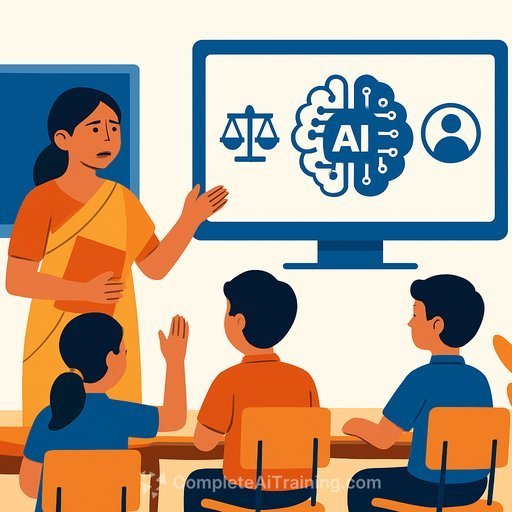AI to enter school curriculum from Class 3 by 2026-27: What educators need to prepare
Artificial Intelligence will become part of the national curriculum from Class 3 starting in the 2026-27 academic year. The Ministry of Education is developing a framework to introduce and scale age-appropriate AI concepts across grades.
The intent is clear: build AI literacy early, develop practical skills through middle and secondary school, and prepare students and teachers for the digital economy.
What's planned
- AI introduced from Class 3 in 2026-27 with a graded roadmap across K-12.
- CBSE is creating the integration framework and running pilots that help teachers use AI tools for lesson planning and classroom content.
- Today, 18,000+ CBSE schools already offer AI as a skill subject from Class 6, including a 15-hour fundamentals module.
- Students in Classes 9-12 can opt for AI as an elective, signaling growing demand.
Training at scale
Reaching more than one crore (10 million) teachers is the core challenge. As School Education Secretary Sanjay Kumar stated, the system needs to move quickly so both students and teachers can work with AI over the next two to three years.
The current pilot focuses on practical use: teachers applying AI tools to create plans, resources, and assessments. Expect professional development, tool guidelines, and standard templates to roll out in phases.
Jobs outlook and policy context
A new NITI Aayog report estimates that AI-led automation could displace around two million traditional jobs while creating up to eight million new roles-if the right ecosystem exists. The report calls for tighter links between the upcoming India AI Talent Mission and the ongoing India AI Mission, alongside stronger academia-industry-government partnerships.
It also highlights two enablers schools should care about: access to computing infrastructure and open data for student projects and research exposure.
What school leaders can do now
- Appoint an AI lead or committee to coordinate curriculum, procurement, PD, and policy.
- Audit current readiness: devices, bandwidth, classroom display, access policies, and data privacy practices.
- Plan PD in tiers: AI literacy for all staff; classroom workflows with AI; assessment integrity and feedback with AI; subject-specific applications.
- Start with low-risk use cases: lesson ideation, rubric generation, differentiated worksheets, formative checks, and multilingual support.
- Set guardrails: student data protection, acceptable use, citation norms, plagiarism detection, and AI disclosure in assignments.
- Pilot in a few grades/subjects, collect evidence of learning impact, then scale.
- Engage parents with clear guidance on safe, age-appropriate AI use at home.
- Map AI exposure to existing competencies: computational thinking, data literacy, ethics, and digital citizenship.
Curriculum building blocks (by stage)
- Primary (Classes 3-5): AI concepts through stories and play, pattern recognition, simple data examples, responsible tech use.
- Middle (Classes 6-8): Fundamentals of AI systems, prompts and instructions, basic data handling, bias and fairness, tool evaluation.
- Secondary (Classes 9-12): Projects with real datasets, model basics, domain-specific applications (science, languages, arts), ethics, and careers.
Assessment and integrity
- Use a mix of in-class tasks, process portfolios, and oral defenses to validate learning.
- Require AI-use disclosure and reflection: what was used, why, and how it changed the output.
- Focus on reasoning and artifact quality over rote completion.
Procurement checklist
- Privacy-first AI tools with school-level admin controls and data segregation.
- Compliance with national data protection norms and student safety guidelines.
- Multilingual capability and offline or low-bandwidth options where needed.
- Clear licensing, cost ceilings, and teacher training included.
Further reading and resources
Upskilling for educators
If you're planning PD pathways for the next two years, start curating short, hands-on modules teachers can apply immediately. For structured options, explore curated AI courses for educators that cover classroom use, ethics, and assessment.
The timeline is tight, but the steps are clear: build literacy, train teachers, set guardrails, and run focused pilots. Do this well, and students will graduate ready for the jobs AI creates-not the ones it replaces.
Your membership also unlocks:






